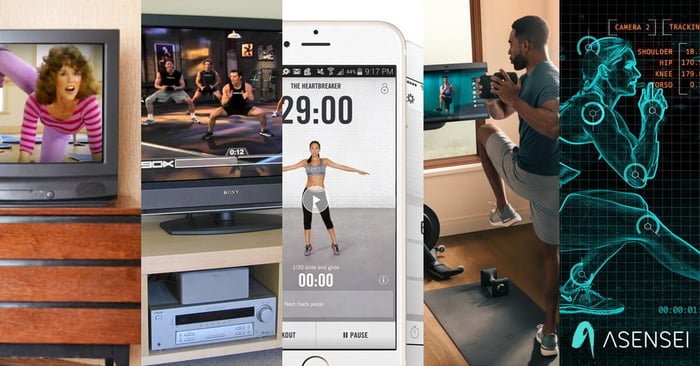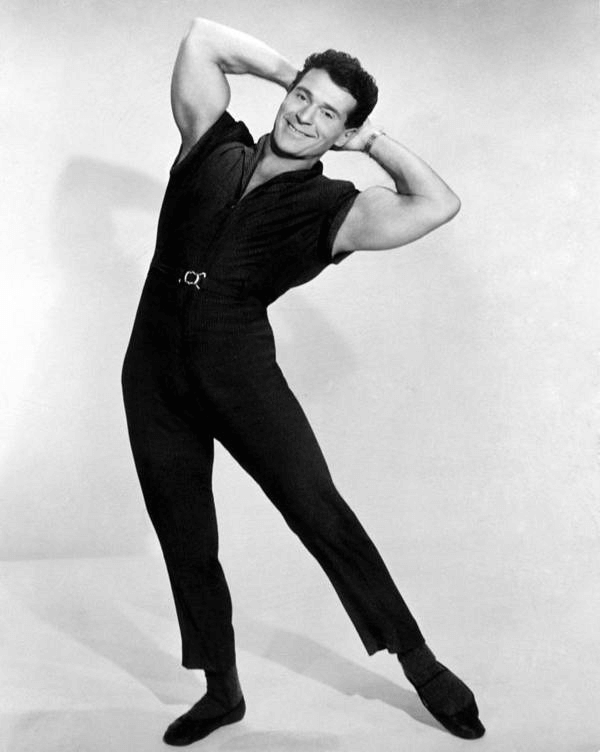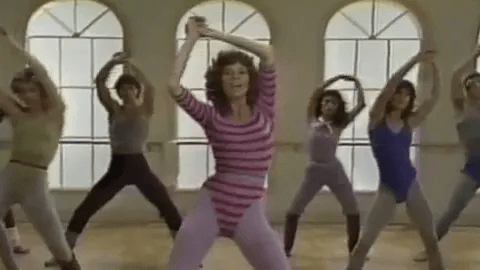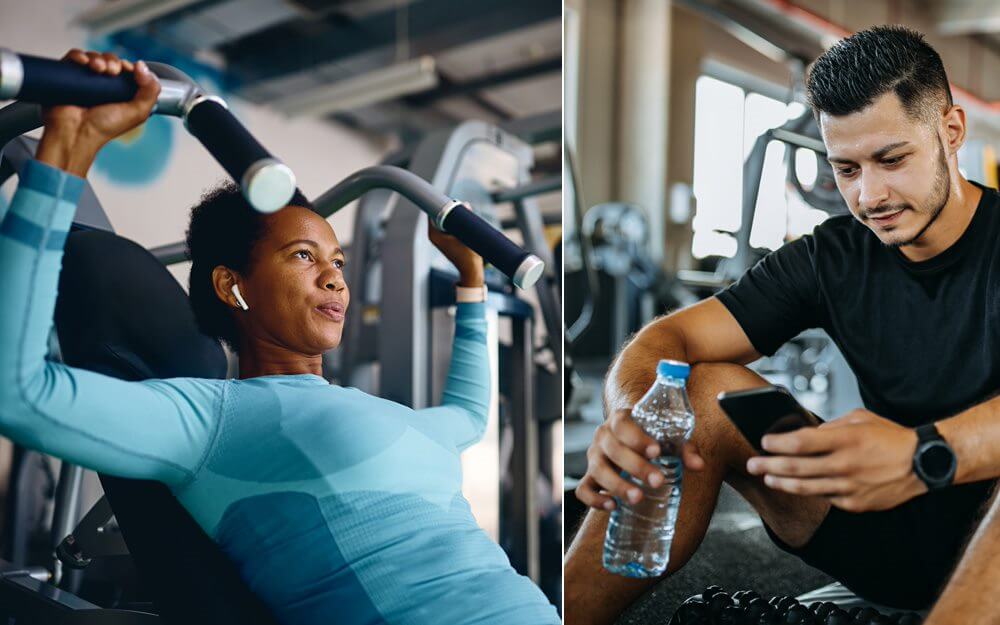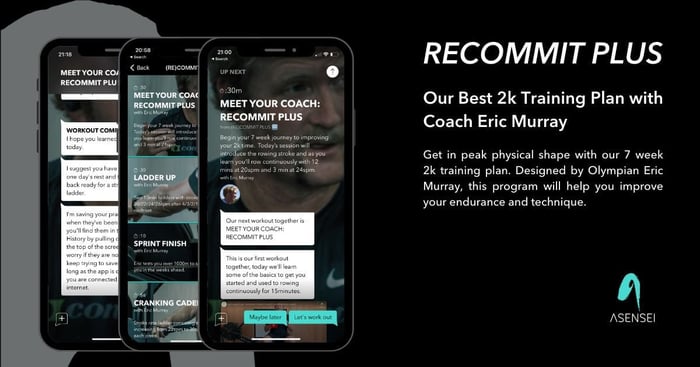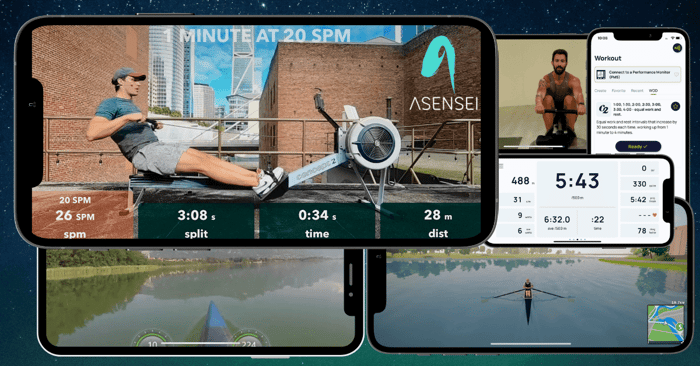The workout video is nothing new: the cultural phenomenon of a guided video workout has existed since the early 20th century, with Jane Fonda’s fitness empire bringing the form to its spandex-clad pinnacle in the 1980s. The history of the workout video is linked closely with developing technology, showing off the technology’s full potential, and democratising exercise to get the masses moving from the comfort of our own homes.
Table of Contents
Home workouts with Hollywood stars
Guided exercise on TV was popularized by Jack LaLanne, an American fitness and nutrition guru and motivational speaker, who claimed to have turned his ‘sugarholic’ youth around after listening to a public health lecture by health food pioneer Paul Bragg. Although LaLanne’s nutritional advice was often based on buzzwords and pseudoscience, his workouts were very popular, and he himself continued with his two-hour workouts into his 90s. His TV show, The Jack LaLanne Show, was the longest-running TV exercise program, and he presented exercise shows for 34 years.
Perhaps the most famous of the 20th century’s workout video stars was Jane Fonda, who brought the home workout video into people’s lives worldwide. Whilst the intention wasn’t to revolutionize fitness, but rather raise money for her political activism, the 1982 Jane Fonda’s Workout has had a global impact, becoming the first non-theatrical home video release to top sales charts. The video was based on her exercise book, which by the time the video was released had remained on the New York Times bestseller list for two years, and the video went on to sell more than 17 million copies. Alongside her challenging yet achievable exercise routines, Fonda’s spandex outfit and bouffant hair became known as fashion symbols of the 80s, making the home workout fashionable as well as accessible. Her routines were made up of stretching and resistance exercises, with the intention of providing women with a workout to do on their own terms in their own homes, when gyms were largely seen as the realm of men. Jane Fonda regards her videos as giving women permission to have muscles, and she never body shames her viewers, making her workout videos an empowering way of taking fitness into your own hands, on your own terms.
Workout videos created a space for the whackier characters of the fitness world to thrive. Former pole vaulter Greg Smithey become the face of Buns of Steel, a shaping and toning series focusing on the backside. Joanna Rohrback created Prancercise, a ‘springy, rhythmic way of moving forward, similar to a horse’s gait’, going viral in 2013. Countless themed workouts arose from pop culture, led by singers, models, actors, and media personalities. These videos often became viral sensations thanks to their amusing or unusual qualities, and with the trend cycle once again turning to 80s and 90s fashions, some are seeing a resurgence.
Jack LaLanne and Jane Fonda’s videos both have the same goal in mind: getting the viewer moving. They center physical health, aiming to promote movement and exercise, while making workouts appealing and fashionable, yet without criticising the viewer’s appearance.
Social media: home workouts, homemade
Social media has enabled the growth of individual influencers from nowhere, with Instagram in particular changing the workout scene. Thanks to this rise in online platforms, especially during the Covid-19 lockdowns, not only is the workout video itself available at home, the creation of videos is increasingly taking place at home. Social media has particularly benefited the more extreme personalities, with the barrier to entry low and the virality high. Whilst many of these influencers have contributed videos that have been encouraging and available to everyone, visual media like Instagram is prone to slipping into promoting extreme body shapes, as the often highly posed and edited images used to promote workouts show bodies that are hard to achieve without surgical intervention or harmful dieting, such as the extreme ‘slim-thick’ body, or the return of ‘heroin chic’. The pressure to conform to such fashionable shapes and aesthetics can lead to disordered eating, and has been documented as a contributing factor to orthorexia, alongside others. This takes video workouts from a way to get the viewer moving more than they otherwise would, to a way to sell products all the way from gym leggings to ‘slimming’ protein powder.
The Covid-19 lockdowns led to a sharp spike in online workouts, with many gyms offering classes via video call, and fitness influencers capitalising on the demand. In the UK, with the closure of schools, fitness coach, TV presenter, and author Joe Wicks started PE with Joe, a YouTube series to try to promote exercise among children, continuing for around a year. He was awarded an MBE for his work and smashed world records for most viewers of a fitness workout livestream on YouTube. Similarly, YouTube fitness channels such as Chloe Ting and Yoga With Adriene went viral during the lockdowns, and sparked a wave of YouTube videos showing their followers’ ‘body transformations’. Ting in particular is associated with weight loss and body sculpting, and is especially known for her ‘Two Week Shred’ series, whereas Adriene Mishler is better known for her beginner-friendly style. What they all have in common is making exercise more accessible, and continuing to bring workouts into the home.
Connected fitness: keeping track
In recent years, connected fitness has started to take off. People have started to try and improve home training through pushing the boundaries of technology, from offering features like leaderboards (for everyone from Peloton to Duolingo!), integrated music, and quantitative tracking of stats for power, distance, and speed, through connected equipment. From there, many have moved towards form tracking. Whilst workout videos are guided, and technology is adding some tracking, they aren’t coached. Coaching alongside tracking is where ASENSEI is revolutionising the form, with interactivity and personalized training built in. ASENSEI watches you as you watch it, closing the loop and ensuring your technique and form are developed responsibly and safely, in the ways you need it to be. This allows ASENSEI to focus on getting you moving more than you otherwise would, at whatever level you need, from beginner rowers who are just trying to exercise a bit more, to high-level competitors.
The future: personalized workouts, anywhere
Furthermore, ASENSEI is pioneering a more advanced technology, coming to the market via the ASENSEI.AI software development kit, which enables real-time form tracking, assessment of your movement capabilities, and enables all fitness and health apps to integrate a much more in-depth, personalized coaching experience. For example, when ASENSEI watches your form it can do things like monitor your squat to look out for what you do well, like how deep you go, but also warn you if you do something that isn’t desirable, such as leaning your torso too far forward. It can also take input from the coach to make sure you’re only given the appropriate information at the right time to give a seamless coached workout experience, and assess your range of movement and use that to provide recommendations for ways to adapt and improve it.
At the end of the day, if you’re exercising more than you otherwise would, you’re still achieving Jane Fonda’s original aim. So grab your phone, get your Spandex on, and hit the machine!

